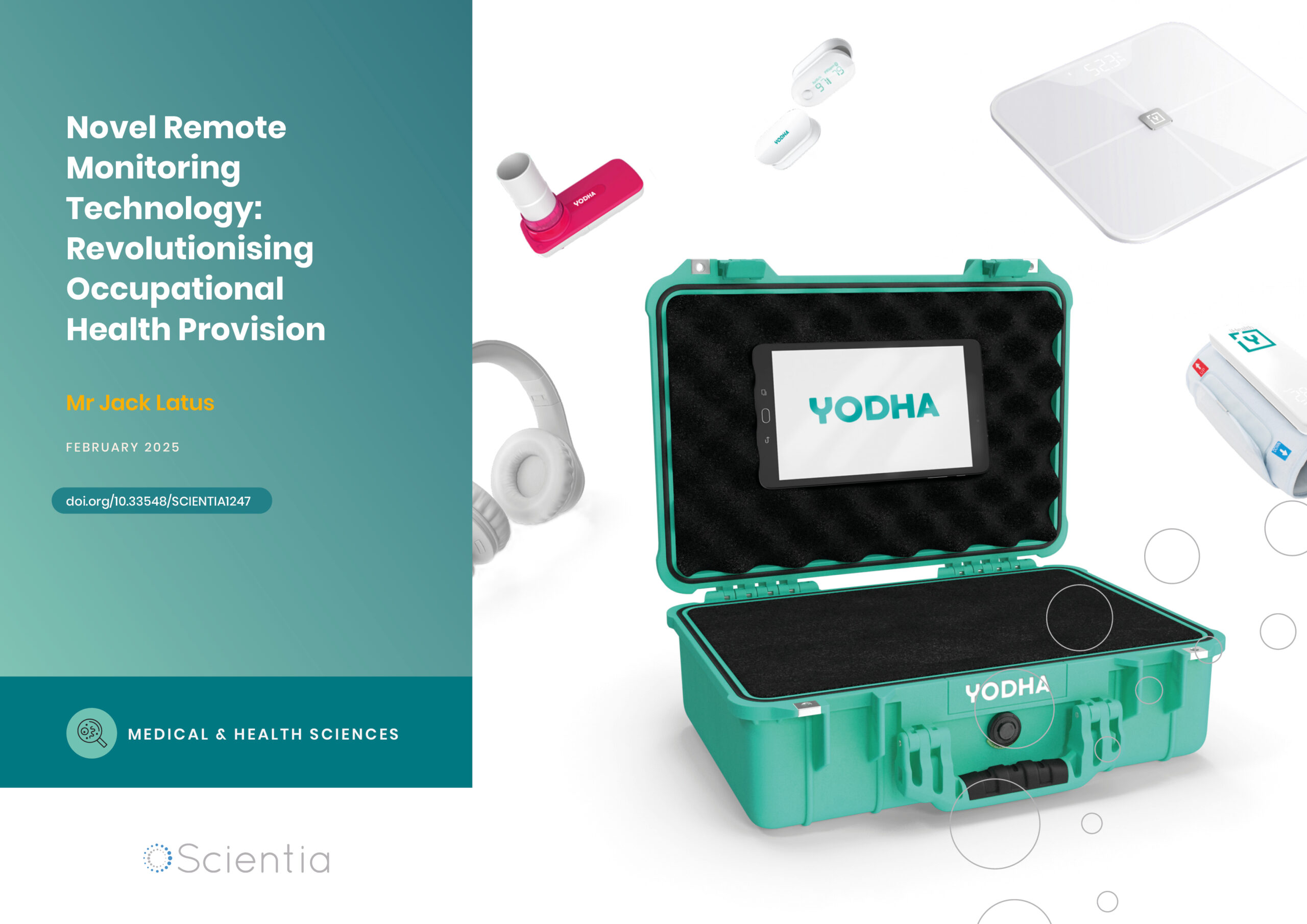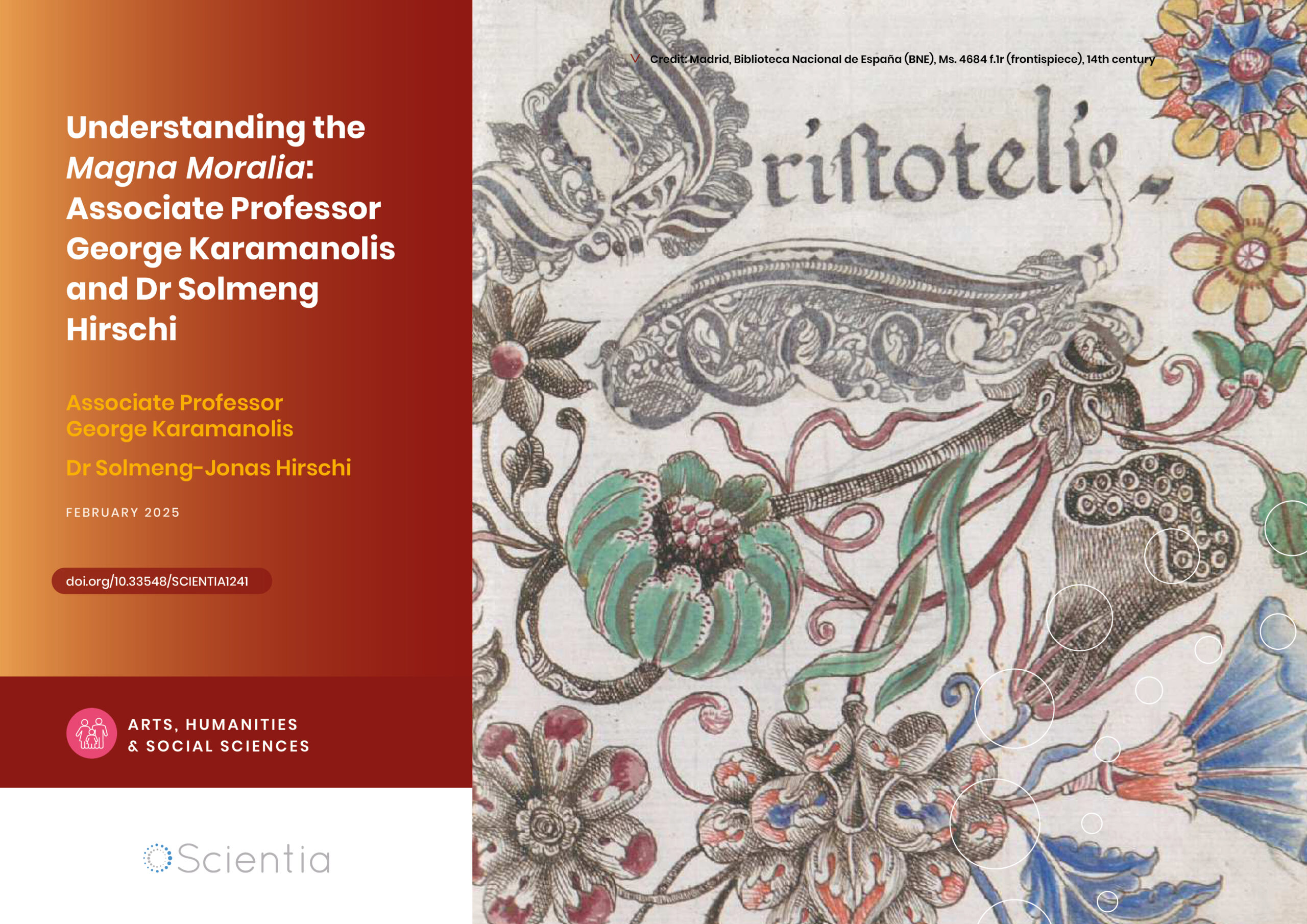Dr Korbinian Moeller – The Brain, the Body and Mathematics
Dr Korbinian Moeller and a team of researchers at the Leibniz-Institut für Wissensmedien are endeavouring to identify the cognitive and neuronal processes underpinning an individual’s mathematical ability, by exploring the concept of embodied numerical training.
The Importance of Numeracy
The ability to perform and comprehend even the most basic of numerical calculations underpins many of the activities involved in daily life. Estimating the amount of money in your purse to determine whether you are able to make a necessary purchase, or perhaps calculating the number of nights to book your hotel when staying away from Friday to Wednesday, or the number of hours you have left at work – these are all day to day examples of processing number magnitude information.
However, what is perhaps less obvious is the fact that when conducting such calculations, bodily actions are often involved. Finger counting is one example – a process often utilised by children in their early numerical development but also observed in adults. For instance, when determining the number of nights to stay in your hotel, did you use your fingers? Why is this so?
A research field called ‘embodied numerosity’ explores the link between motor and sensory experiences and numeracy. As expert in this field is scientist Dr Korbinian Moeller. Since December 2012, Dr Moeller, who has expertise in Developmental Psychology, Neuropsychology and Cognitive Science, has headed the junior research group of Neurocognitive Plasticity at The Leibniz-Institut für Wissensmedien (IMW).
His team conducts in-depth research into the cognitive and neuronal underpinnings of the development of numerical and mathematical competencies. ‘I pursue these interests employing the latest neuro-cognitive techniques such as fMRI and the consideration of neuro-functional models that allow us to associate numerical competencies to brain function and structure,’ says Dr Moeller. By identifying such neuronal processes, Dr Moeller aims to create novel media tools that involve the entire body to enhance and promote numerical and arithmetic learning in children.

Fingers: Tools of Learning in Children
Entering into the research field of embodied numerosity, Dr Moeller, in collaboration with Dr Mirjam Frey and Dr Hans-Christoph-Nuerk, conducted an intervention study that aimed to address conflicting opinions regarding the value of finger-based numerical training in children. Previously, many countries adopted a syllabus for early mathematical teaching that largely dismissed the use of finger-based strategies in early math instruction.
This was viewed as a bid to prevent the adoption of counting-based computational strategies that had often been observed in children that were mathematically challenged. However, numerous neuropsychological research studies challenged this opinion, arguing that finger-gnosis (the ability to differentiate between fingers without visual feedback) and also fine motor skills were a valid predictor of future numerical ability.
What remained inconclusive, however, was a distinct causal relationship. Dr Moeller and colleagues thus created a comprehensive study based on an earlier model of early numerical development. More than 100 children in the study sample group received 18 sessions of training in finger-gnosis, finger-counting and finger-based arithmetic strategies in their first year of primary school, whereas a similar-sized control group of children did not attend the finger-based training, and only took regular math classes. One example of finger-gnosis training adopted in the study was the assignment of different colours to different fingers, and asking the children to navigate their way through a labyrinth with a specific colour.
Before and after the training, the children were given a battery of mathematical tests that assessed their performance in different evaluation tasks, including mental arithmetic and number line estimation. Additional tasks were administered to control for influences of general cognitive abilities and working memory.

Dr Moeller and the team devised two hypotheses. Firstly, they proposed that finger-based training should specifically increase the understanding of numerical quantity and number relations, and therefore increase performance in mental arithmetic compared to the control group’s performance. This is because the concept of addition and subtraction can easily be conveyed by finger-based strategies.
Their second hypothesis was that finger-based training should not influence a child’s performance on tasks such as number line estimation. This hypothesis was formed on the basis that the idea of a mental number line, a spatial representation of number magnitude in which numbers increase from left to right, is hard to convey using finger-based strategies.
The team’s preliminary analyses revealed no negative effects of finger-based strategies and seemed to corroborate their hypotheses. This suggests that using fingers in primary mathematics instruction may not be harmful to children’s numerical development, and might actually be beneficial. However, more in-depth analyses are needed to substantiate this claim. The research efforts of Dr Moeller and his colleagues thus provides further evidence for the concept of embodied numerical training, paving the way for exciting subsequent studies.
‘My work is driven by the idea that basic numerical abilities, such as counting and understanding number magnitude, serve as building blocks for later numerical and mathematical achievement. As such, these basic numerical competencies deserve special attention and promotion, for instance through new digital media that easily allows for the use of bodily experiences of numerical concepts.’

Dancing to the Beat of Numeracy
‘Fingers are the most obvious embodied representations of numbers,’ states Dr Moeller. ‘However, our intention was to go beyond fingers and use full-body movements.’ And that they did. In 2011, the research team used a digital dance mat that allowed them to evaluate embodied training for developing number processing skills using whole-body responses.
In the study, kindergartners were presented with a number line that increased in size from left-to-right in correspondence with the metaphorical mental number line. The children were then asked to jump to the left or right field of the digital dance mat depending on whether they classified a number that they were shown as larger or smaller than the standard on the number line.
In contrast, the control training required children to simply tick on the larger of two numbers presented on a tablet PC using an electronic pen. The team’s findings revealed that children improved more strongly in number line estimation and counting after completing the embodied training on the dance mat, compared with the control group.
In 2013, Dr Moeller and colleagues took this work one step further. The research team endeavoured to extend the whole-body experience of numerical concepts from simply taking one step to the left or right, to continuous movements along a number line. In the study, first-grade children walked up to 3 metres along a number line, ranging from 0 to 100, that was taped to the floor, until they reached the estimated position of a target number that they were provided.
The team used a novel Kinect sensor to detect and record children’s movements in 3D space. In this study, the control training involved the same estimation task on a tablet PC, which therefore did not provide an embodied physical experience of walking on the number line. Similar to Dr Moeller’s previous research, the results indicated that embodied training led to increased performance in number line estimation.
Subsequent studies have also alluded to the success of embodied training in a range of age groups, from kindergarten to second grade, utilising varying digital media formats, and through different numerical training contents. There are consequently numerous avenues for future research, for which the team has suggested it would be exciting to evaluate the range of movement necessary to create beneficial embodied effects in numerical training.
In previous studies, children were required to move their whole body, or simply their fingers. Might training involving smaller physical movements, perhaps involving the arms or legs, be as efficient? Virtual reality is another research direction that excites the team, as it may also allow for the identification of distinct physical movement from perceived movement, for example on a number line.

Figure 1: The game-based app
Digits Grasp Digits – the Next Step
The increasing availability of modern digital touch-sensitive devices, such as tablets and digital dancing mats, has provided a unique opportunity for Dr Moeller’s research findings to be brought into practice. In their current work, Dr Moeller’s team is developing an app for finger-based numerical training that can be utilised in an educational environment for kindergarten children. In the game-based app (see Figure 1), children help a little alien named Finn, who has been stranded on Earth and needs to collect stars to fuel his spaceship and fly back home. Because Finn has no hands or fingers, children have to ‘grab’ the stars by placing their fingers on the screen either sequentially for training finger counting or simultaneously for fostering cardinality knowledge.
The app will provide novel insight, as it will address the contribution of finger training to the development of different basic numerical skills such as counting, quantity understanding, and initial calculations. It is anticipated that immediate feedback provided on the basis of a correct or incorrect answer will encourage interaction with the game and hence interaction with numeracy.
‘My work is driven by the idea that basic numerical abilities, such as counting and understanding number magnitude, serve as building blocks for later numerical and mathematical achievement. As such, these basic numerical competencies deserve special attention and promotion, for instance through new digital media that easily allows for the use of bodily experiences of numerical concepts,’ says Dr Moeller. The research team hopes that their latest project will shed yet more light on the complex cognitive processes underlying a child’s numerical development, whilst also providing a freely available learning tool.
Dr Moeller’s fascinating research undertakes a unique, dynamic and fun approach to applying scientific findings in the context of education that is most certainly relevant and exciting in our technologically advancing society.
Reference
https://doi.org/10.33548/SCIENTIA389
Meet the researcher

Dr Korbinian Moeller
Leibniz-Institut für Wissensmedien
Tübingen
Germany
Dr Korbinian Moeller is the head of the junior research group Neuro-cognitive Plasticity at the Leibniz-Institut für Wissensmedien (IWM). In addition, he is professor for applied learning and knowledge psychology at the University of Tuebingen. Dr Moeller studied psychology at the RWTH Aachen University and the University of Dundee in Scotland before pursuing his PhD (awarded in 2010) at the Paris-Lodron University in Salzburg, Austria and the Eberhard Karls University in Tuebingen, Germany. He is a faculty member of the LEAD Graduate School – Learning, Educational Achievement and Life Course Development, funded by the Excellence Initiative of the German federal government. A specific focus of his work is on the investigation of the development and acquisition of numerical competencies and corresponding changes on the cognitive as well as the neural level.
CONTACT
E: k.moeller@iwm-tuebingen.de
W: https://www.iwm-tuebingen.de/www/en/personen/ma.html?uid=kmoelle
KEY COLLABORATORS ON THE EMBODIED NUMERICAL LEARNING PROJECT
Proessor Hans-Christoph Nuerk
http://www.uni-tuebingen.de/en/faculties/faculty-of-science/departments/psychology/research-groups/diagnostics-and-cognitive-neuropsychology/research-group/staff/hans-christoph-nuerk.html
Professor Ulrike Cress
https://www.iwm-tuebingen.de/www/en/personen/ma.html?uid=ucress
Professor Ursula Fischer
https://www.sportwissenschaft.uni-konstanz.de/forschung/entwicklung-und-foerderung-in-der-fruehen-kindheit-prof-fischer/
FUNDING
Moeller & Roesch (2019–2022), How digits help digits grasping numbers, ca. 350,000 EUR, funded by Deutsche Forschungsgemeinschaft (DFG).
Cress, Nuerk, & Moeller (2014 – 2019), Embodied learning of numerosities – Math with the dance mat, ca. 430,000 EUR, funded by Deutsche Forschungsgemeinschaft (DFG).
Moeller, Huber, & Gawrilow (2017 – 2019), Development and evaluation of a digital app for self-regulated training of finger-based numerical strategies, ca. 175,000 EUR, funded within the Leibniz-ScienceCampus Tübingen on Cognitive Interfaces.
Nuerk, Engel, Fischer, Moeller, & Cress (2011 – 2014), Movements in 3D space to improve numerical learning ca. 55,000 EUR, funded within the joint graduate school Effektive Lehr-Lernarrangements: Empirische Evaluation und Intervention in der Pädagogischen Praxis of the Eberhard-Karls University Tuebingen and the University of Education Ludwigsburg.
Moeller, Martignon, Nuerk, & Trautwein (2011 – 2014), Beneficial or negative effects of finger-based strategies on numerical learning in primary school ca. 55,000 EUR, funded within the joint graduate school Effektive Lehr-Lernarrangements: Empirische Evaluation und Intervention in der Pädagogischen Praxis of the Eberhard-Karls University Tuebingen and the University of Education Ludwigsburg.

Creative Commons Licence
(CC BY 4.0)
This work is licensed under a Creative Commons Attribution 4.0 International License. 
What does this mean?
Share: You can copy and redistribute the material in any medium or format
Adapt: You can change, and build upon the material for any purpose, even commercially.
Credit: You must give appropriate credit, provide a link to the license, and indicate if changes were made.
More articles you may like
Dr Markus Regauer | An Evidence-Based Perspective on Treating Severe Ankle Injuries
Ankle injuries are very common but notoriously difficult to treat due to the complexity of the ankle anatomy, compounded by the range of surgical options available. Dr Markus Regauer, a leading orthopaedic surgeon from SportOrtho Rosenheim and Schön Klinik Vogtareuth, worked with a team of clinicians and scientists at the Musculoskeletal University Centre Munich to thoroughly review the published literature. This was combined with Dr Regauer’s extensive surgical experience to produce a practical guide for surgeons to guide the best treatment for individual ankle (syndesmotic) injuries.
Professor Roger Harrison | New Approaches to Fighting Cancer: Annexin Proteins and Carbon Nanotubes
Cancer is a leading cause of death worldwide, and efforts to provide new and more effective treatments are critical. Professor Roger Harrison from the University of Oklahoma has developed new methods to target cancer using annexin proteins and carbon nanotubes. The annexin proteins allow tumour cells to be selectively targeted while healthy cells are spared. Combining these novel molecules with established options, such as immunotherapy, is proving very effective.
Mr Jack Latus | Novel Remote Monitoring Technology: Revolutionising Occupational Health Provision
The ever-growing applications of health technology have reached the world of occupational health. Mr Jack Latus from the Latus Group, based in the UK, endeavours to make the workplace safe, healthy, and productive. His company is one of the leading occupational health providers, paving the way for exploring new approaches to improve health in the workplace with pioneering technology to boost accessibility to occupational health services.
Understanding the Magna Moralia: Associate Professor George Karamanolis and Dr Solmeng Hirschi
The Magna Moralia is one of the three ethical works attributed to Aristotle in antiquity, next to the Eudemian Ethics and the Nicomachean Ethics. However, the Magna Moralia has not been studied as extensively as the other two treatises, with research focusing largely on the question of authorship and much less on the ethical theory. The team at the University of Vienna aims to establish a new critical edition of the Magna Moralia, to offer a fresh English translation, and to prepare a philosophical commentary. The project will enable a future re-appreciation of the Magna Moralia while contributing to a better understanding of the development of Aristotelian ethics.




